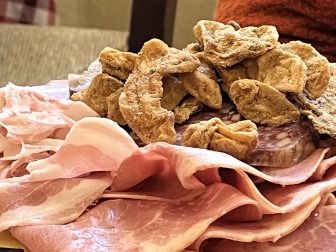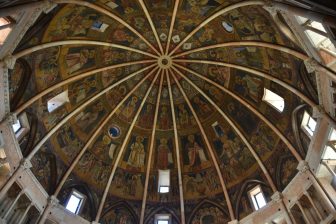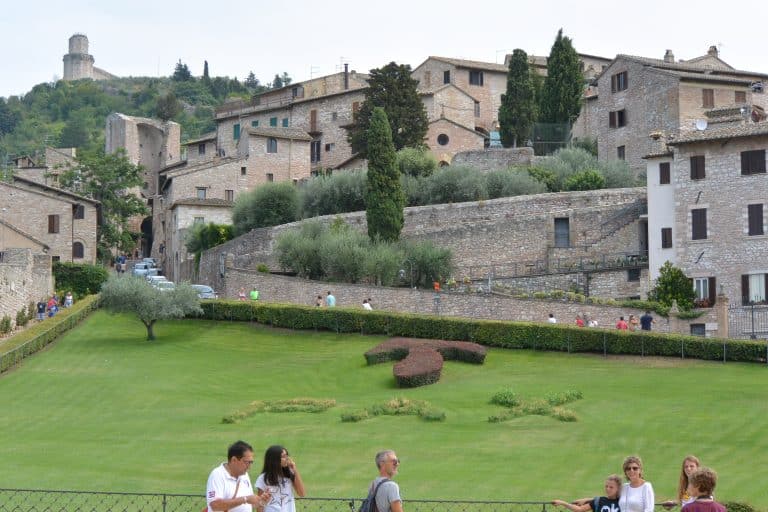
[ Aug.2019 ] I continue talking about Basilica of San Francesco of Assisi in Umbria in Italy.
The person in the museum was so kind that this time our friend asked about a picture in which the beams are coming out of crucified Jesus Christ towards a person.
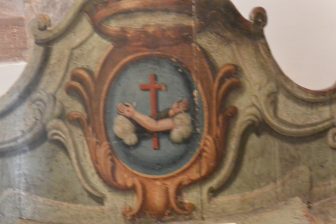
He told us that San Francesco had wished to have the same pain as Christ so hard that one day, the same wounds of Christ had appeared to his hands and feet.
Those wounds were not only the marks, but also they really hurt him.
100 years later, exactly the same thing happened to a female saint, too.
And whenever the painters want to describe these incidents, the beams from Christ are painted.
In fact, there were other paintings with the beams in the museum.
Because of this incident, the symbol of the religious community of San Francesco consists of two crossed hands, one of Christ and the other of San Francesco and both of them have the wound.
Listening to these explanation, those treasures in the museum became more meaningful.
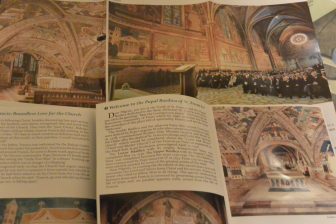
We sincerely thanked him and went out of the museum and moved to the upper basilica.
This place was brighter than the lower basilica and it was as gorgeous with many fresco paintings.
And again, the photography was strictly forbidden.
Many of those paintings were showing main events of San Francesco’s life, painted by the famous artist, Giotto and others.
I realise that I have not mentioned that this basilica was started being built in 1228, two years after San Francesco’s death and the upper basilica was completed in 1239.
The bad earthquake in 1997 damaged it badly and in 2000, it was rebuilt.
We went out from the upper basilica and found a lawn spread in front of us.
There was the shrubberies in the shape of the slightly crooked “T” and “PAX” in the lawn.
I did not tell you but this was my second visit to this Basilica but only thing I remembered was this lawn.
This crooked “T” is apparently read as “tau” and this was the cross which San Francesco used.
This is letter “T” in Hebrew and in Greek and it is one of the oldest cross which appeared in the Old Testament.
According to the information I found in the internet, the reason why San Francesco liked to use this cross was that because it does not have the head part, it is supposed to be expressing the humility towards Christ.
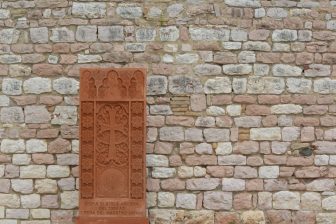
It could have been much more interesting if we had asked about this to the person in the museum…
“PAX” below “T” means peace.
I noticed that there was one Khachkar on the wall.
When we went to the island in Venice, where there was an Armenian church a few years ago, we learned that the Armenian Orthodox Church was accepted by Vatican at one point, so this Khachkar here may be something to do with that.
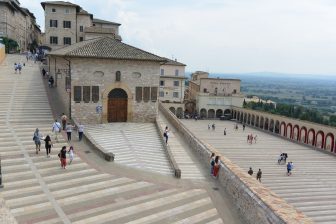
By the way, when I visited this Basilica for the first time, it was before the earthquake and Assisi was one of the destinations of the tour from Japan which I joined with my parents.
According to my mother, we heard a lot of explanations here from a Japanese monk then, which I have completely forgotten.
I guess that many followers of San Francesco are here to study and practice austerities from all over the world.

